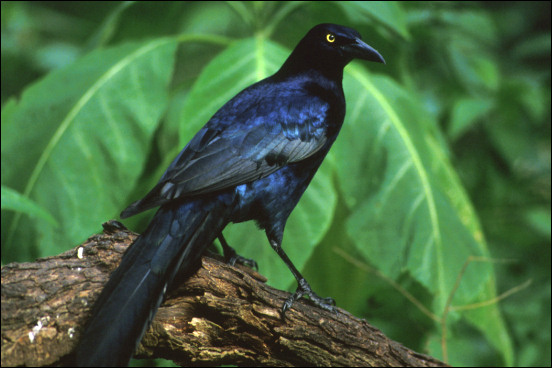
Remember the old refrain, "The red, red robin goes bob, bob, bobbing along"? Lots of birds bob—that is, hop as they make their way along the ground or between tree branches. Others, like our Great-tailed Grackle, stalk majestically, as if it were beneath their dignity to make like a rabbit.
So, why do some birds hop and some walk? A definitive answer may be beyond us, but there is a plausible explanation. Most hoppers are within the group known as perching birds and have various adaptations for spending time in shrubs and trees. For example, their toes automatically grasp branches without the necessity of contracting muscles as they settle down. Very handy for not falling out of trees while they sleep. More pertinent for our problem, wings are nearly useless for moving around within the dense canopy of trees and shrubs where there is hardly enough room to spread wings, yet alone fly; and the twigs often are too far apart for a simple stride. But a little jump from one limb to another works just fine.

Contributor: Arthur H. Harris, Laboratory for Environmental Biology, Centennial Museum, University of Texas at El Paso.
Desert Diary is a joint production of the Centennial Museum and KTEP National Public Radio at the University of Texas at El Paso.

Great-tailed Grackle, a strider—not a hopper. Photograph by John and Karen Hollingsworth, courtesy of the U.S. Fish and Wildlife Service.